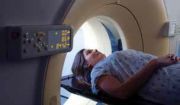Article
Treatment with Alemtuzumab Produces Sustained Reductions in T2 Lesions and Brain Atrophy in Patients with Multiple Sclerosis
Author(s):
Study data from two phase 3 clinical trials announced at AAN 2014 show sustained effects one year after two years of treatment with alemtuzumab in patient with MS.

Data from two phase 3 clinical trials show the positive benefits observed in patient with multiple sclerosis (MS) via magnetic resonance imaging (MRI) from two years of treatment with alemtuzumab (marketed under the trade name Lemtrada by Genzyme) are maintained at one year after completion of treatment.
Alemtuzumab is a monoclonal antibody that selectively targets CD52, resulting in the depletion of circulating T and B cells.
Study results announced at the 2014 American Academy of Neurology annual meeting in Philadelphia, PA, demonstrated that MS patients in the CARE-MS I and CARE-MS II trials experienced improvements in key measures of disease activity, including reductions in brain lesions and atrophy.
The CARE-MS I trial was a randomized two-year study of treatment-naive patients with active relapsing-remitting multiple sclerosis that compared treatment with alemtuzumab to high-dose subcutaneous interferon beta-1a. The patients in the CARE-MS II trial had relapsed afterprior therapy.
Patients in both studies received two courses of treatment: intravenous infusion on five consecutive days, followed by a second round administered on three consecutive days, 12 months later.
Data included results from 349 patients from CARE-MS I and 393 patients from CARE-MS II. Some patients who showed evidence of disease activity during the year after the treatment period received retreatment retreatment with alemtuzumab (18 percent from CARE-MS I and 20 percent from CARE-MS II).
Patients received MRI scans at baseline and at 12, 24, and 36 months.
Researchers reported that during one-year of follow-up, “more than 70% of patients were free of MRI activity indicative of acute inflammation, defined as gd-enhancing or new or enlarging T2 hyperintense lesions.” They also reported that the rate of brain atrophy was reduced following two years of treatment continued to slow during one-year follow-up.
Patients in CARE-MS I who were treated with alemtuzumab had significantly reduced annualized relapse rates compared to patients treated with interferon beta-1a. Measures of disability progression were similar across treatment groups.
Patients in CARE-MS II who were treated with alemtuzumab also had significantly reduced annualized relapse rates compared to patients treated with interferon beta-1a, as well as significantly slower rates of accumulation of disability.




